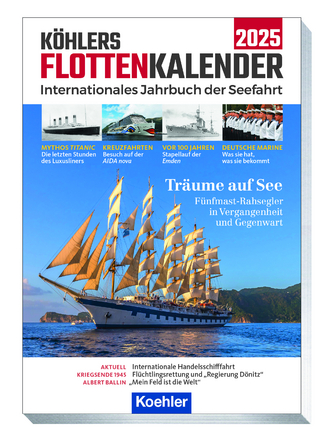
Cunard
A Photographic History
Seiten
2008
|
Revised edition
Amberley Publishing (Verlag)
978-1-84868-064-7 (ISBN)
Amberley Publishing (Verlag)
978-1-84868-064-7 (ISBN)
- Keine Verlagsinformationen verfügbar
- Artikel merken
The history of the British transatlantic steamship line in words and pictures.
In 1839, Samuel Cunard travelled from his native Nova Scotia to Britain to raise capital to found his fledgling steamship company, which was to be named the British & North American Royal Mail Steam Packet Company. Quickly shortened to the Cunard Line, the first ship set sail for Canada and America in July 1840 and opened the steamship trade to the Americas. The fleet rapidly expanded to become the dominant force on the transatlantic route, with feeder services from the Mediterranean too. Never having lost a passenger's life at sea, Cunard was also one of the safest of the steamship lines and operating comfortable ships. By the 1900s, few lines could match the company's vessels for speed or luxury and the advent of the four-funnelled Mauretania, Lusitania and Aquitania just confirmed the pre-eminence of the line. During the inter-war years came the Queen Mary and Queen Elizabeth and the line could boast the fastest and largest ships in the world. Never a line to stand still, in 1969 came Queen Elizabeth 2 and in the 2000s came the world's largest liner, RMS Queen Mary 2.
In 1839, Samuel Cunard travelled from his native Nova Scotia to Britain to raise capital to found his fledgling steamship company, which was to be named the British & North American Royal Mail Steam Packet Company. Quickly shortened to the Cunard Line, the first ship set sail for Canada and America in July 1840 and opened the steamship trade to the Americas. The fleet rapidly expanded to become the dominant force on the transatlantic route, with feeder services from the Mediterranean too. Never having lost a passenger's life at sea, Cunard was also one of the safest of the steamship lines and operating comfortable ships. By the 1900s, few lines could match the company's vessels for speed or luxury and the advent of the four-funnelled Mauretania, Lusitania and Aquitania just confirmed the pre-eminence of the line. During the inter-war years came the Queen Mary and Queen Elizabeth and the line could boast the fastest and largest ships in the world. Never a line to stand still, in 1969 came Queen Elizabeth 2 and in the 2000s came the world's largest liner, RMS Queen Mary 2.
Janette McCutcheon was born in Scotland, and lived close to Clydebank, home of some of the most famous ships ever constructed, including three of Cunard's famous Queens. She has written many books on maritime history and regularly sails the seven seas lecturing aboard cruise ships. She has appeared on BBC's The Scots at Sea and acted as consultant to Channel 4's Speed Machines and various Discovery Channel programmes on ocean liners. Janette has one of the largest collections of Cunard and White Star memorabilia in the UK, including postcards, photos, posters and items from on board White Star and Cunard ocean liners.
| Zusatzinfo | 220 Illustrations |
|---|---|
| Verlagsort | Chalford |
| Sprache | englisch |
| Maße | 248 x 226 mm |
| Gewicht | 443 g |
| Themenwelt | Natur / Technik ► Fahrzeuge / Flugzeuge / Schiffe ► Schiffe |
| Geisteswissenschaften ► Geschichte ► Teilgebiete der Geschichte | |
| Technik | |
| ISBN-10 | 1-84868-064-3 / 1848680643 |
| ISBN-13 | 978-1-84868-064-7 / 9781848680647 |
| Zustand | Neuware |
| Haben Sie eine Frage zum Produkt? |
Mehr entdecken
aus dem Bereich
aus dem Bereich
internationales Jahrbuch der Seefahrt
Buch | Softcover (2024)
Koehler in Maximilian Verlag GmbH & Co. KG
23,95 €


